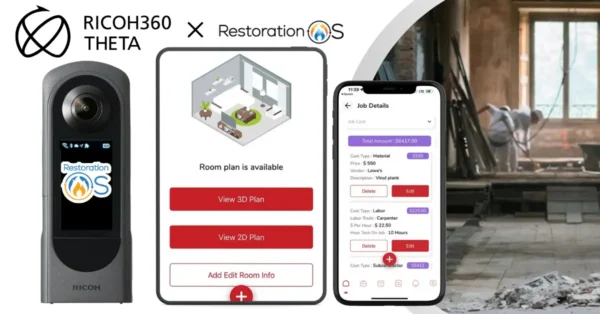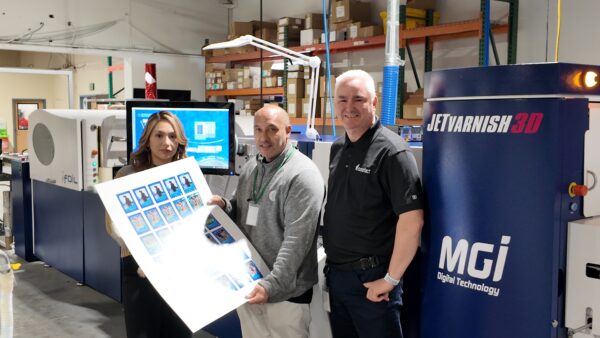Must-have strategies for managed IT success.
The question on the table is: What separates dealers who are successful with managed IT from the rest? This being a nuanced and multilayered topic, I needed some detail, so I consulted with some industry aficionados to help me craft a recipe for managed IT success. Thank you to the following for their insights and expertise: Kobi Elbaz, senior vice president and general manager of Global Channel Organization at HP; Julie Branc, vice president product portfolio and client experience for All Covered’s division of Konica Minolta Business Solutions U.S.A.; Bob Lamendola, senior vice president of technology and head of Ricoh’s North America Digital Service Center; Bob Madaio, vice president of marketing at Sharp Imaging and Information Company of America; Patrick Layton, vice president of managed IT services at Impact Networking in Chicago; and Dawn Abbuhl, president of Repeat Business Systems in Albany, New York. While their responses varied, eight traits rose to the top. These are not in any order of priority, they all matter.
While their responses varied, eight strategies rose to the top. These are not in any order of priority, they all matter.
- Be Organized
Having a system for every aspect of the engagement, including detailed processes for marketing, customer reviews, onboarding customers, new engineers, etc., is paramount. The strategy should include best practices, applications, hardware, devices, and solutions with techs and engineers cross-trained on these elements, and a process for ongoing evaluation of all the moving parts. Ready-to-go organization can help you hit the ground running.
2. The Ability to Target Customers
Successful sales and marketing efforts begin with knowing who buys your products and services. You already know which organizations are the best targets for your copiers, MFPs, and scanners because you’ve been placing products with them for years.
When it comes to managed IT, though, not all may qualify. All the vendors and dealers I spoke with said companies employing 20 to 50 people should be the leading candidates for managed IT. Those with less than 20 may not have the revenue to support a managed IT program. Those with more than 50 may have the internal resources to support their own IT staff.
Relevancy to a customer’s needs is an essential component of targeting. Successful dealers talk with the owners and managers of customers’ businesses to learn about weaknesses and concerns. This info can help provide the relevancy for crafting offerings that match customer needs. Make your company be the reason why a customer’s operation stays up and running. For many businesses, this is gold. Note that relevancy can be a moving target, so stay attuned to customer needs and adapt your managed IT program as necessary.
Not everyone will be the right fit, so pre-qualify a customer to be sure both sides are aligned. Always realize that you may be offering more—or less— than the customer really needs. Layton said not to be afraid to say “no” to a prospect if the fit isn’t right. Fit is critical, and it is better to get it right upfront than to struggle to make it work a few months down the road or if something untoward happens and your company isn’t ready.
3. Top Executive Involvement
Dealers and OEMs all said that without top-down leadership and commitment, the best laid plans for managed IT will go nowhere. This involvement should include a carefully thought-out plan for putting a managed IT program into action. Part of this involvement comes from the business-owner to business-owner conversations during the targeting—learning about needs you may not have thought of or suspected.
4. Make Security Part of the Deal
All customers need better security, even if they don’t like to admit it. Security is absolutely critical, so make it a primary part of your managed IT offering. OEM-suggested best practices include layered approaches, multifactor identification, encryption, and no compromises. You want to address critical security challenges and help prevent future vulnerabilities. Moreover, security is not a one-and-done activity. It changes constantly, so your technical team must stay up to speed on the latest breaches and remedies to keep your customers’ data and systems safer.
5. Capable Techs
You need to ensure your tech team comprises technical experts and excellent communicators. As you may have found, these capabilities are not necessarily present in the same individual! As you move forward, be sure to have ways of encouraging engineers to continue training, gain certifications, and increase responsibility. The connections built with customers are only as valuable as the quality of the portfolio and the depth of technical expertise.
6. You Need an SME
One person (or more) at your company should be the SME, or subject matter expert, the local guru of managed IT. He or she is the person customers know to call when things go wrong or when they have questions. It’s important to realize that you still need an in-house SME, even if you work with a third-party provider. Having a local person at a known company makes managed IT more comfortable for customers by giving them a go-to person at your firm. This also keeps your company brand on the managed IT offering, even if a vendor or other third party still does the heavy lifting.
7. Make Customer Success Easy
Be easy to work with by understanding customer requirements and having the flexibility to provide what customers need. These are parts of delivering superior service and ensuring customer success. The objective is to solve problems and relieve a customer’s pain—without making them feel any pain. Managed IT should support customer success through best practices, the quality and breadth of services offered, the depth of technical expertise, and the relationships built with customers. The confluence of these components helps ensure managed IT services are relevant to customer needs and support success. As with security, there should be no compromising on best practices.
Transparency is important here. It comes through providing regular updates, quarterly business reviews, and a straightforward customer experience. Transparency fosters proactive information sharing about what’s taking place and keeps customers participating in the process.
Be sure to document the managed IT processes for each customer. While there will be some boilerplate involved, there will also be some steps that are unique to individual businesses.
8. Support the Sales and Technical Teams
Support your sales and technical teams with a solid marketing strategy, a clear and focused approach, high-level talent, and organized processes in every facet of the business, plus the training and resources they need to be successful. Include your sales and technical teams from the beginning because they will be on the front lines. Your OEMs can help here, beginning with some sales training. At the very least, the sales team opens the door with a customer, even though an IT sales or technical group closes the deal.
If your managed IT offering is in partnership with an OEM or other third-party provider, your partner should come in early in the process because they are more knowledgeable than your regular salespeople and often ask the most pertinent questions. This involvement can help close the deal, and their expertise adds credibility to your new operation.
Making managed IT work for your customers can be a real challenge. Even if you have all of this in place, there is still one question that only you can answer: “Are you doing all you can for the customers you have?”
Access Related Content





